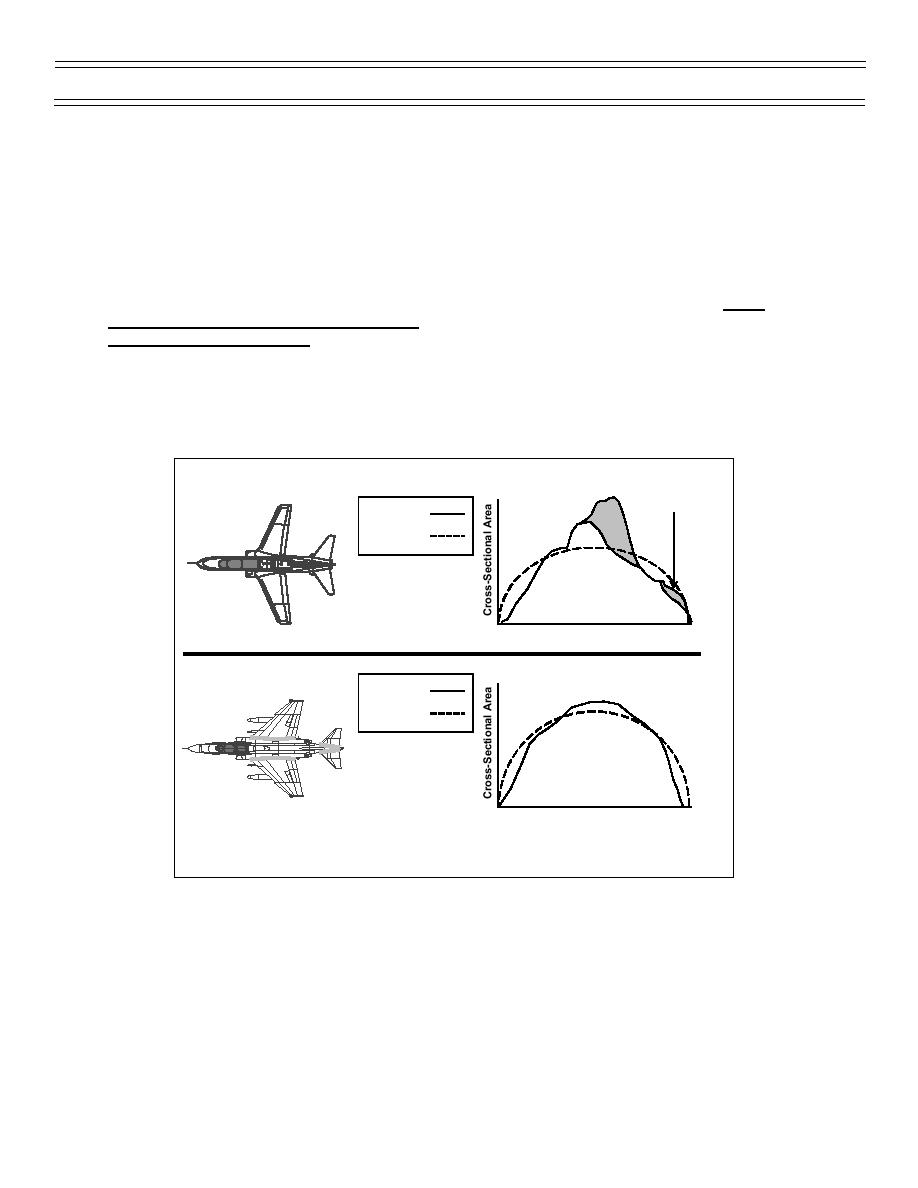
Aero Chapter 02, High-Speed Flight
T-45 Aerodynamics Student Workbook
INTERFERENCE DRAG AND AREA RULE
In addition to wave drag, interference drag (a form of parasite drag) becomes very important at high flight
speeds. Interference drag is broadly defined as increased drag due to airflow from one part of the aircraft
interfering with airflow over another part. Tests established that the flow about a body at transonic and
supersonic speeds is similar to the flow about a body of revolution, such as a bullet, having the same
cross-sectional area. A body of revolution which has no “bumps” or abrupt changes in cross-sectional
area along its length will produce less drag than one which has abrupt variations. We then have the
concept that high-speed drag of an aircraft will be minimized if the distribution of cross-sectional area,
including all parts (wings, fuselage, etc.), is made as smooth as possible. To satisfy this, the cross-
sectional area of the fuselage must be reduced in the region of the wing and tail to compensate for the
additional cross-sectional area of those surfaces (Figure 32). The term applied to that concept is Area
Rule. Area rule is shaping the planform of an aircraft to cause the cross-sectional area to gradually
increase and then decrease. Area rule has not been applied to the T-45.
Horizontal &
Vertical Tails
ACTUAL
Wing
IDEAL
Fuselage
Nose
Tail
Longitudinal Location
T-45 (Not Utilizing Area Rule)
ACTUAL
IDEAL
Nose
Tail
Longitudinal Location
Jet Utilizing Area Rule
Figure 32: AREA RULE
Page 20
(7-99) Original




 Previous Page
Previous Page
